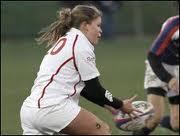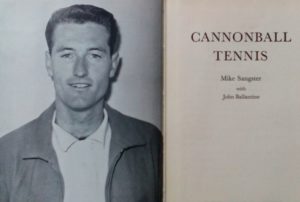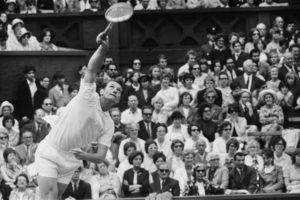Main Menu
Latest Blog Entry
User login
Cannonball Tennis: Mike Sangster
“Devon has everything to offer that I want in life”
Says Mike Sangster in his book “Cannonball tennis”. Mike took up tennis when he was 13 (yes 13) and went on to become the British #1 player, played in many Davis Cup matches and got to the semi-finals of Wimbledon.
Growing up in Torquay, he was coached by the somewhat enigmatic “Mr Roberts” who offered him a few words of advice and then left him to work out his own strengths and weaknesses.
I was sent this gem of a book and it is an entertaining read. Amongst the anecdotes of cooking meals on hotel room floors are some really useful pointers about tennis.
On coaching juniors:
“I think nine or ten is a good age for a boy to first pick up a tennis racket.”
Look at the source of this advice, then look at who the club coach telling you that your 5 year old needs to work on their chopper grip. (Whose interest are they serving?).
“I would say, however that it’s better to allow a beginner to swing his racket at the ball in his own way at first, than to try and put him into a kind of stroke strait-jacket to give him an automatic, orthodox swing.”
“Confusion is often caused in the minds of youngsters because the various grips are explained in a complicated way. This sort of jargon gets you nowhere.”
“If you want to serve well, and can’t throw well, set about learning to throw straight away.”
“Another vital part of good serving is a smooth throw- up of the ball. Many players never learn to serve consistently because they throw the ball up differently.”
(Why on earth are children being pushed into tennis when they simply can’t throw overhand with their good arm and pass accurately with their weaker hand?)
“Once they become tired on court, their concentration goes, and it’s much better to stop playing altogether than continue hitting aimless shots and running about lethargically and without interest.”
First principles of tennis:
- Hit the ball back across the net. Don’t worry about how you do it. Just get it back into court.
- Never miss an easy winner.
- Move to the ball. Don’t wait for it to come to you.
More advanced basics are:
- Serve as hard as you can without double-faulting and concentrate on acquiring a strong second serve instead of always trying to ace your opponent on the first.
- From the baseline, keep the ball as deep in your opponent’s court as you can.
- If the ball is returned short, attack it by hitting it deep into your opponent’s court, preferably into the backhand corner, and rush to the net to volley or smash a winner.
On tennis fitness:
“To get yourself physically ready for long exhausting matches is as necessary as it is for a carpenter to sharpen his tools. Your body is your tool; if it lets you down, it is only because you have not given it that extra-fine preparation that is needed for all sports played at top class.”
Tennis coaches may scoff at some of these points, but I would suggest that overcomplicating things is far too common. This book is a worthwhile and enjoyable read.
Thanks to Mandi Abrahams of Castle Books in Beaumaris for sending it to me.
Further Reading:
Client Testimonials
 Georgina Rozario: England Scrum Half
Georgina Rozario: England Scrum Half
I had the pleasure of having James as my first s&c coach when I was at University in Plymouth. I worked with him for 3 years and learnt everything I now know about training to the best of my ability. When I first saw James I was identified as a talented rugby player but had various injury and illness problems to contend with. By the end of my time with him I had become an athlete and later received my first international cap against the U.S.A.
More



